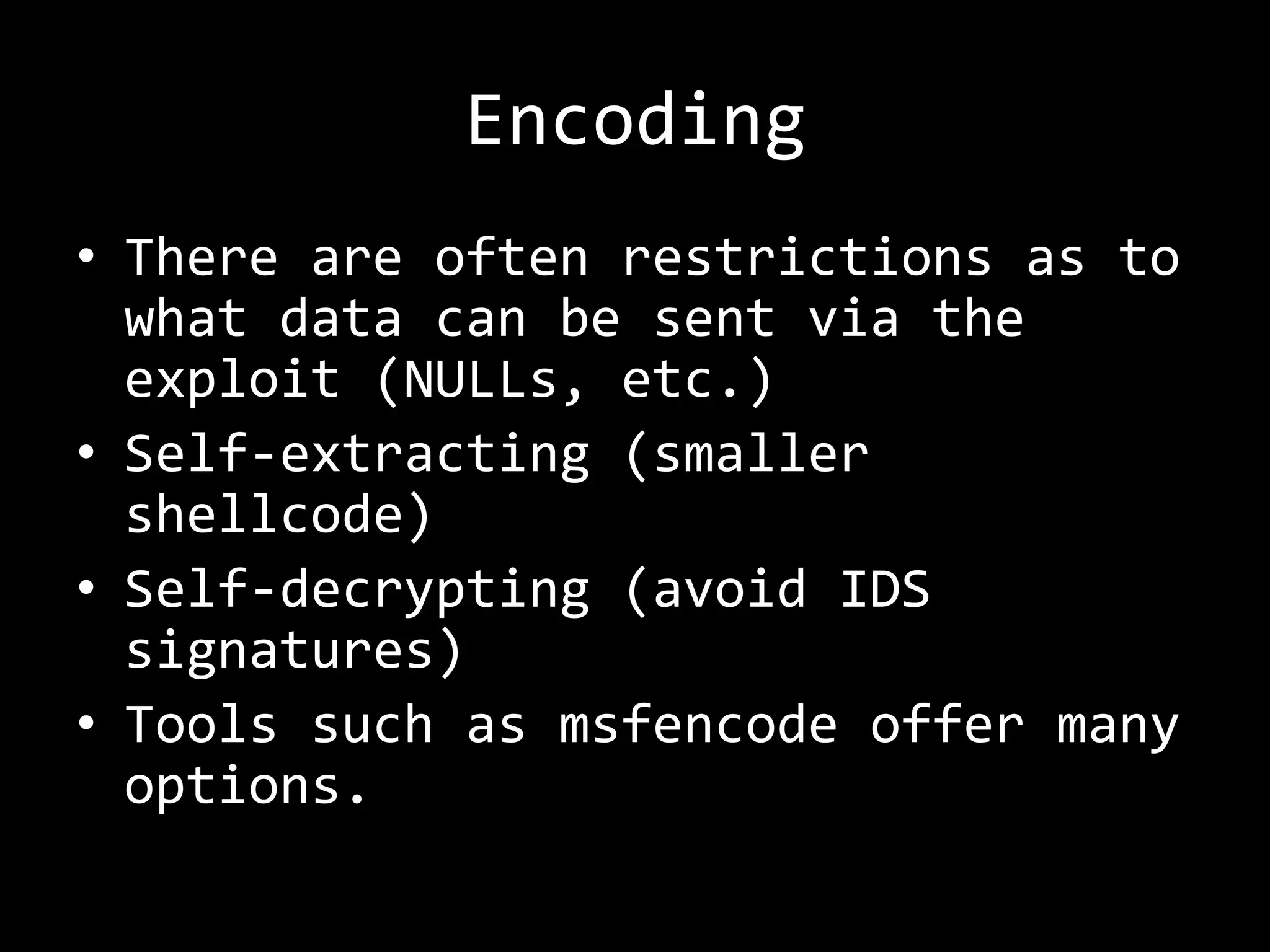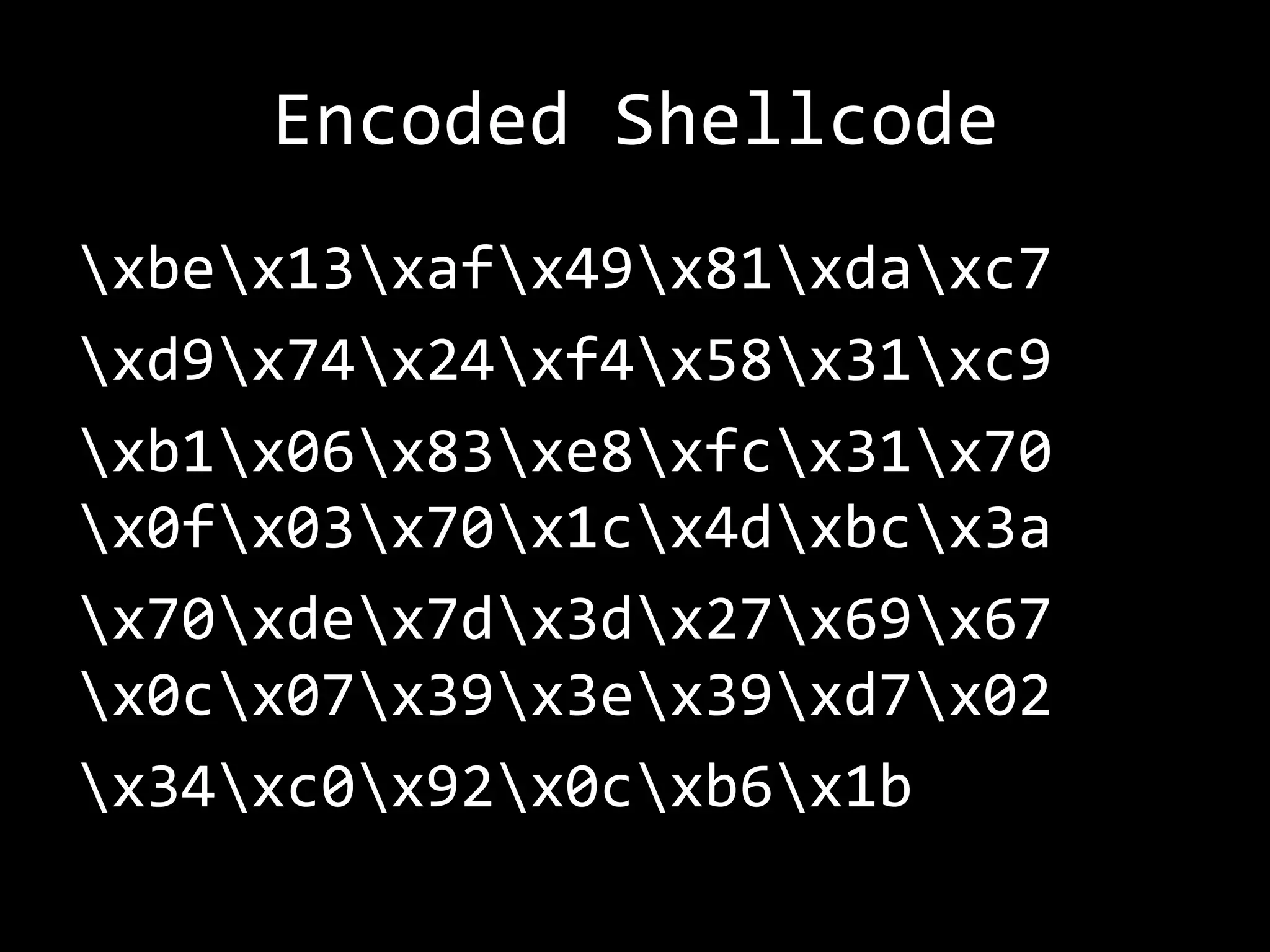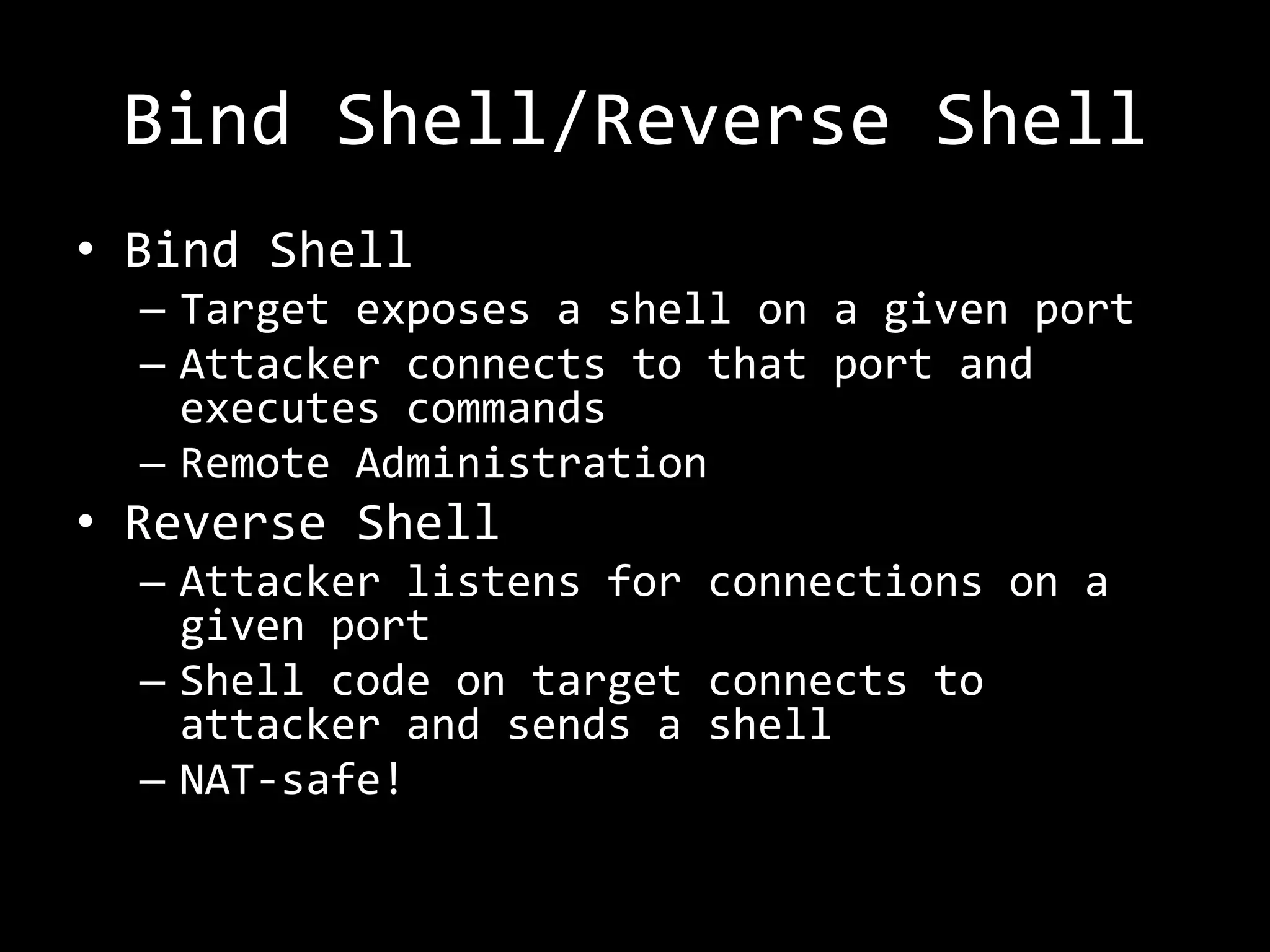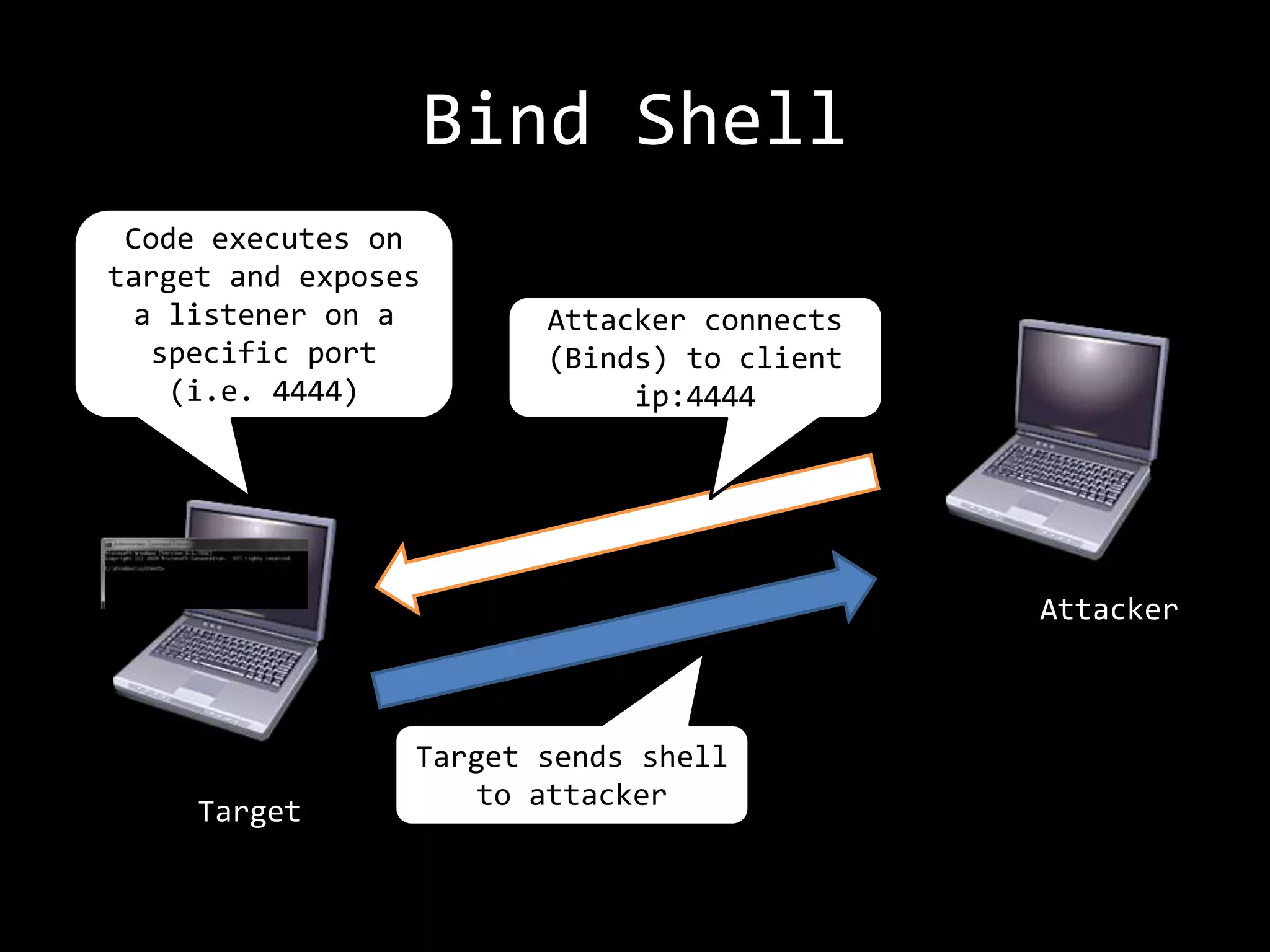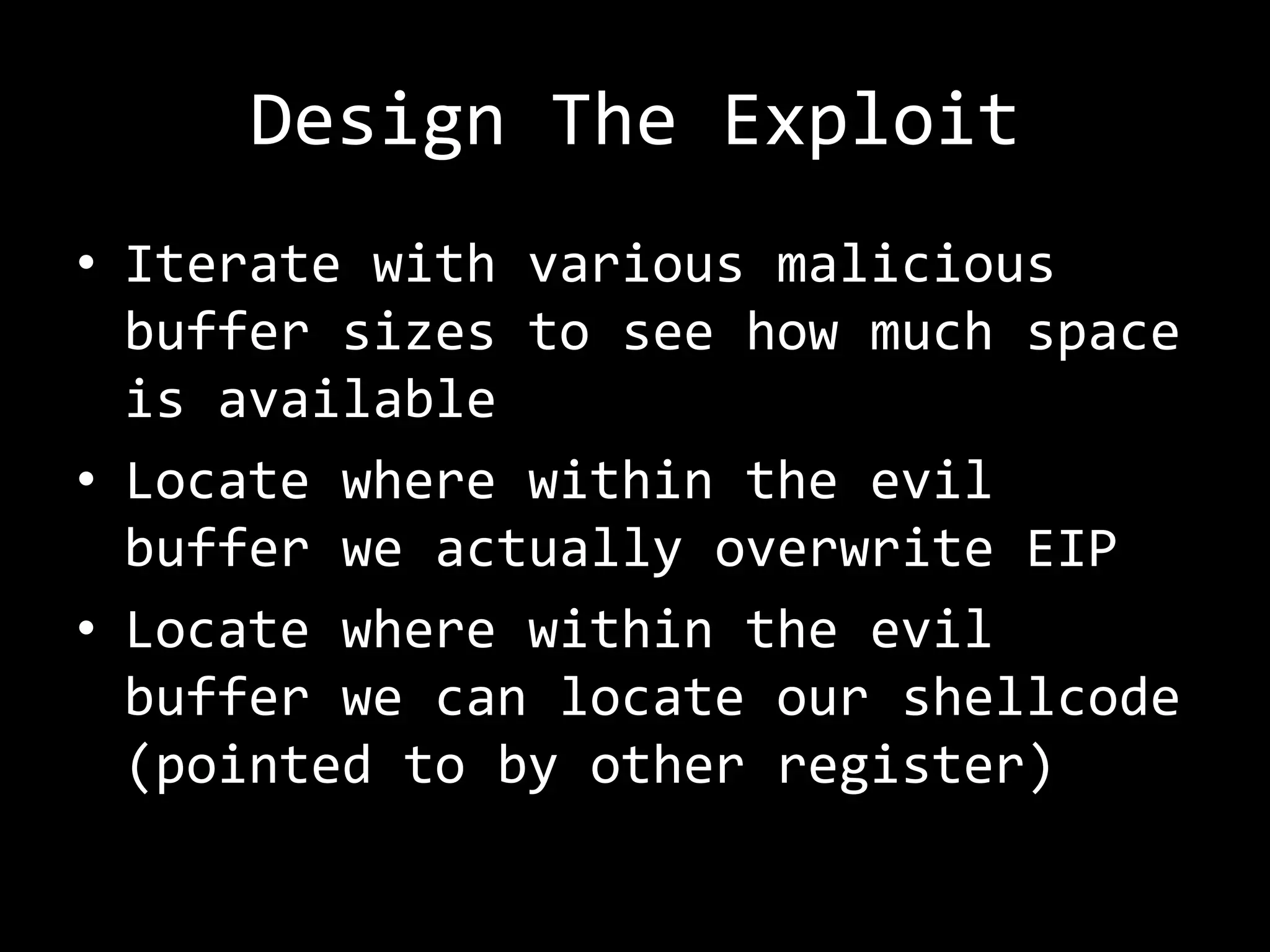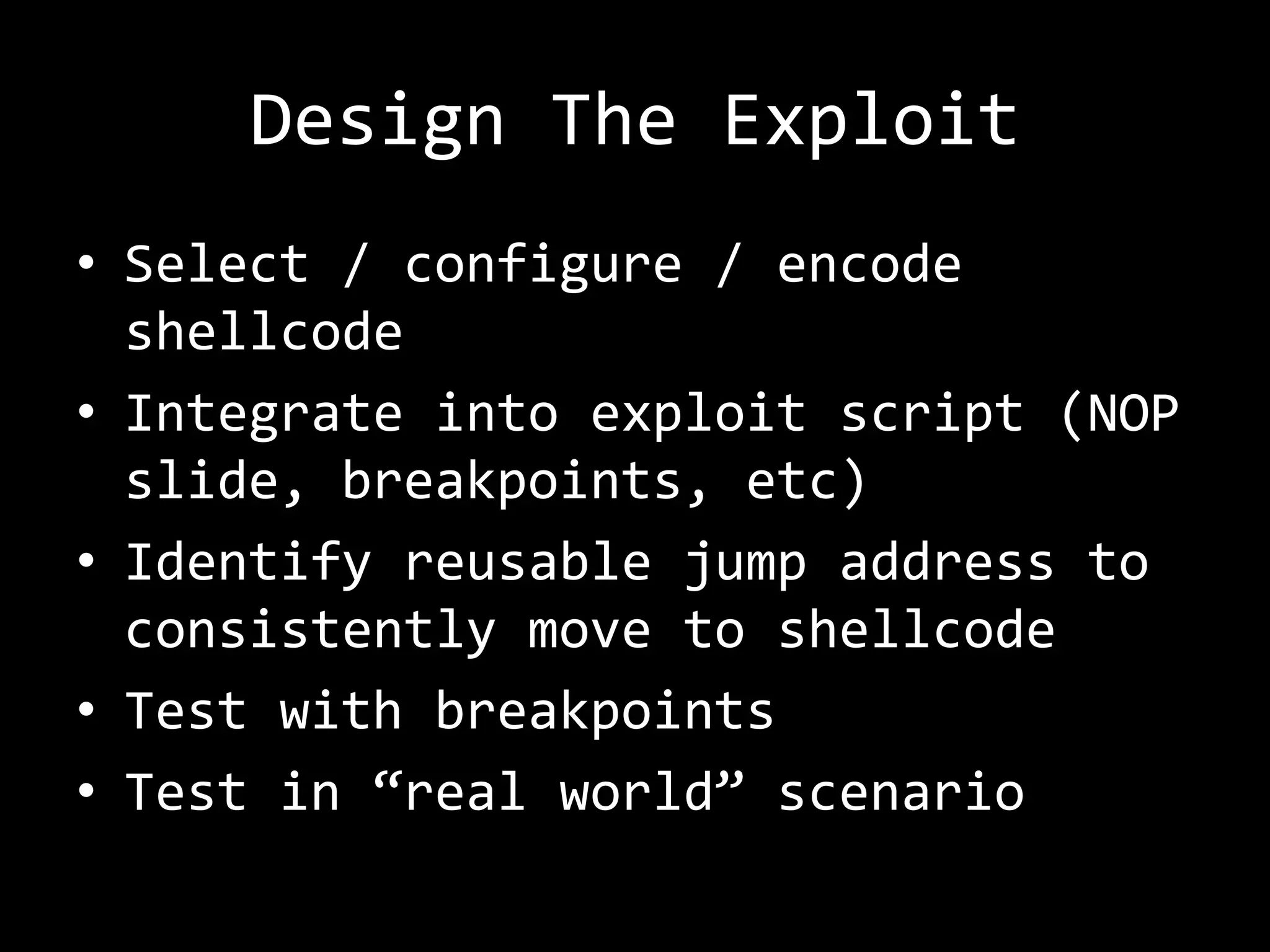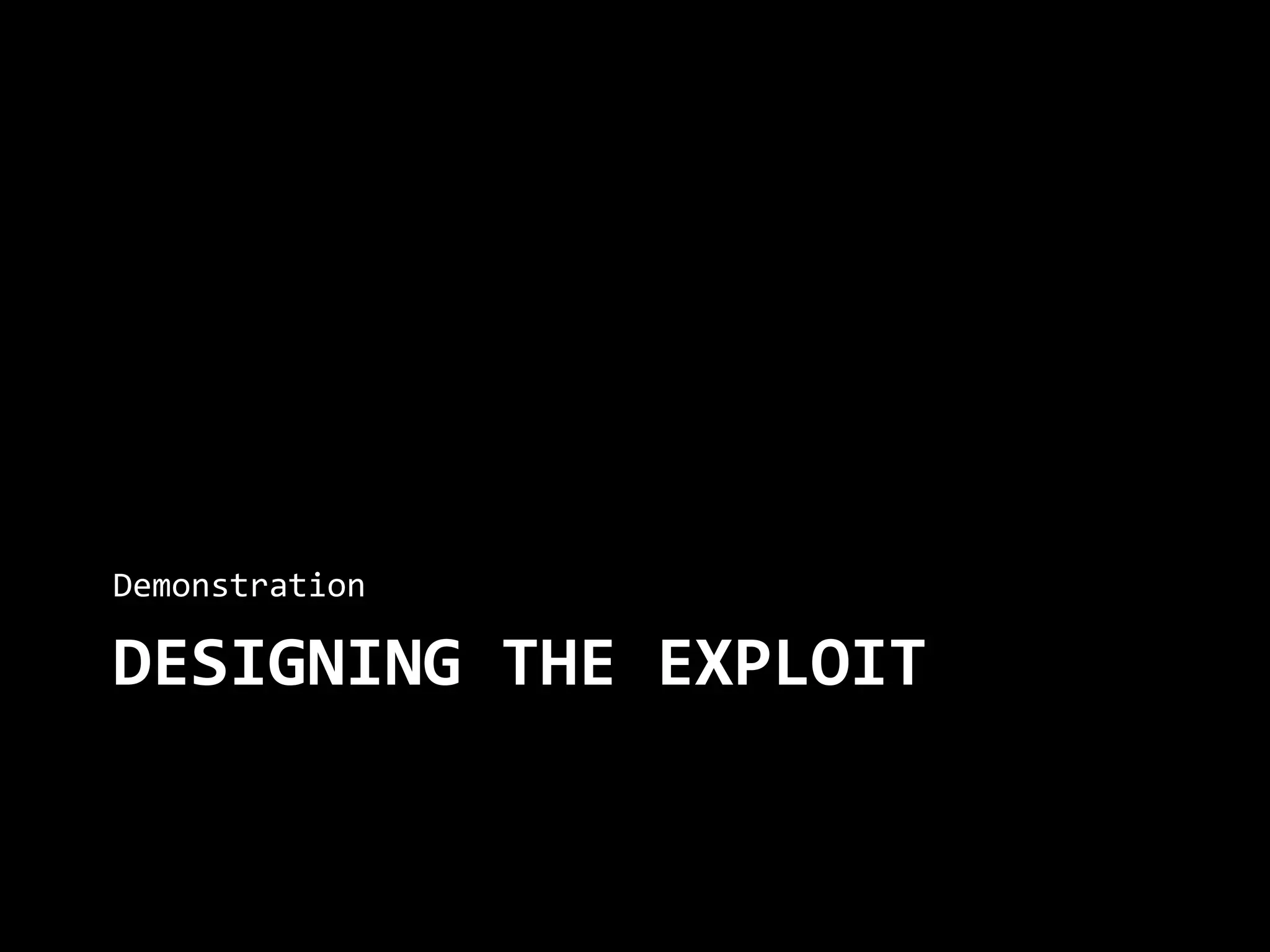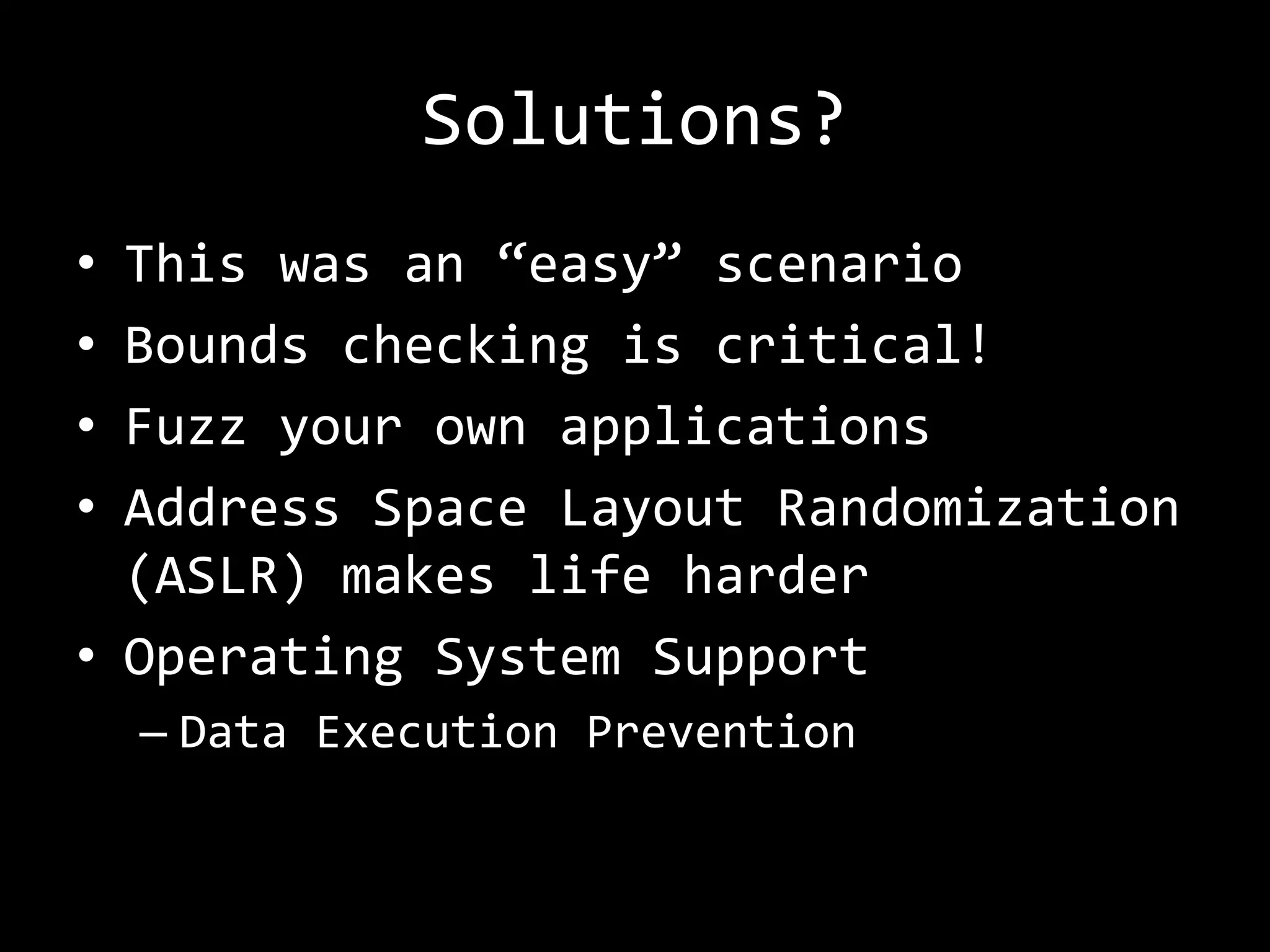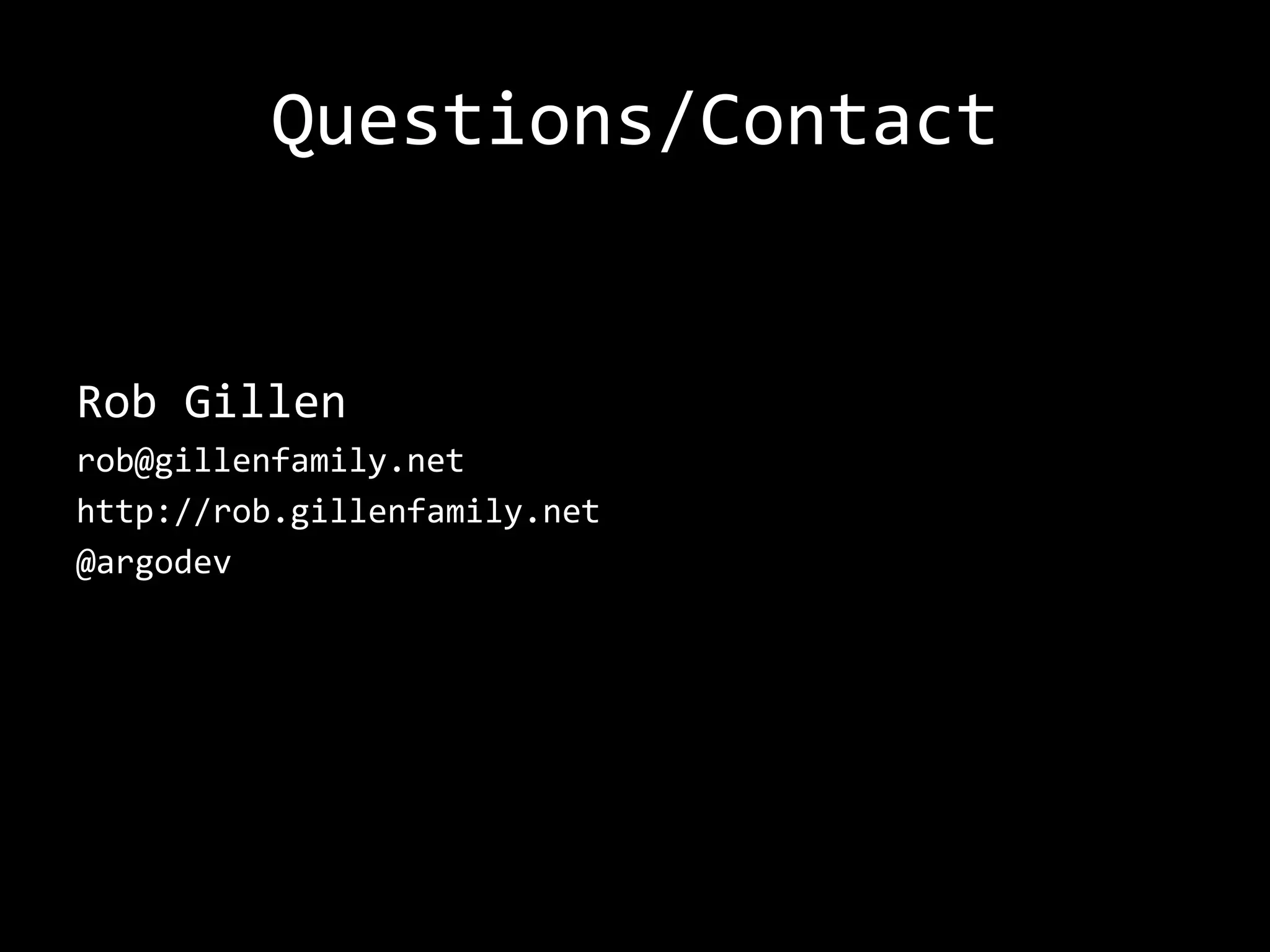The document describes an anatomy of a buffer overflow attack. It begins with disclaimers about the legal and ethical responsibilities when discussing exploits. It then provides an overview of the scenario which involves exploiting a vulnerability in a Windows FTP server to obtain a reverse shell. It defines relevant terminology like buffers, fuzzing, shellcode and bind/reverse shells. It also provides examples of assembly shellcode and encoded shellcode. Finally, it outlines the process of identifying the vulnerability, designing an exploit through fuzzing and overwriting registers, and obtaining a shell through the exploit.

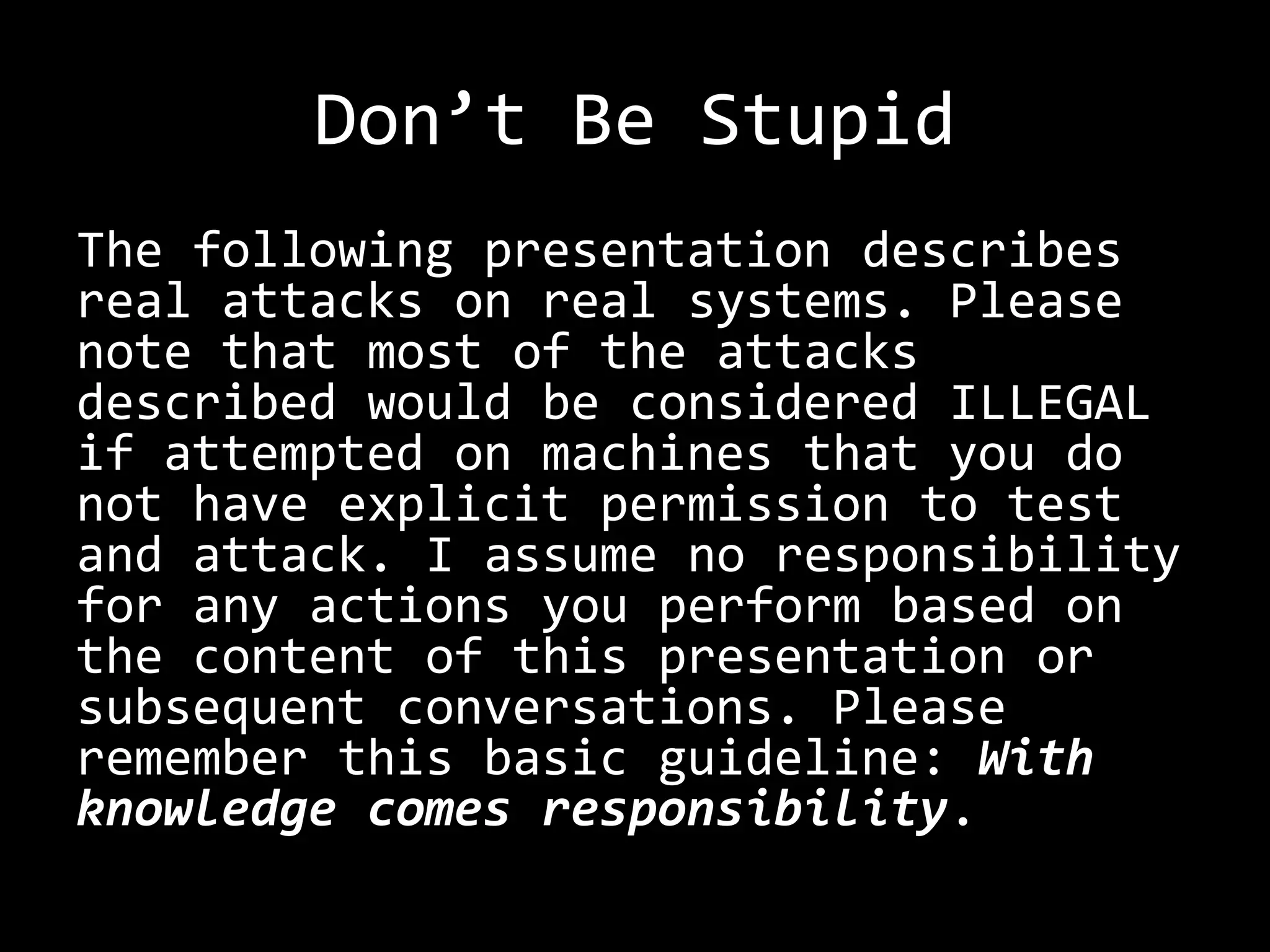
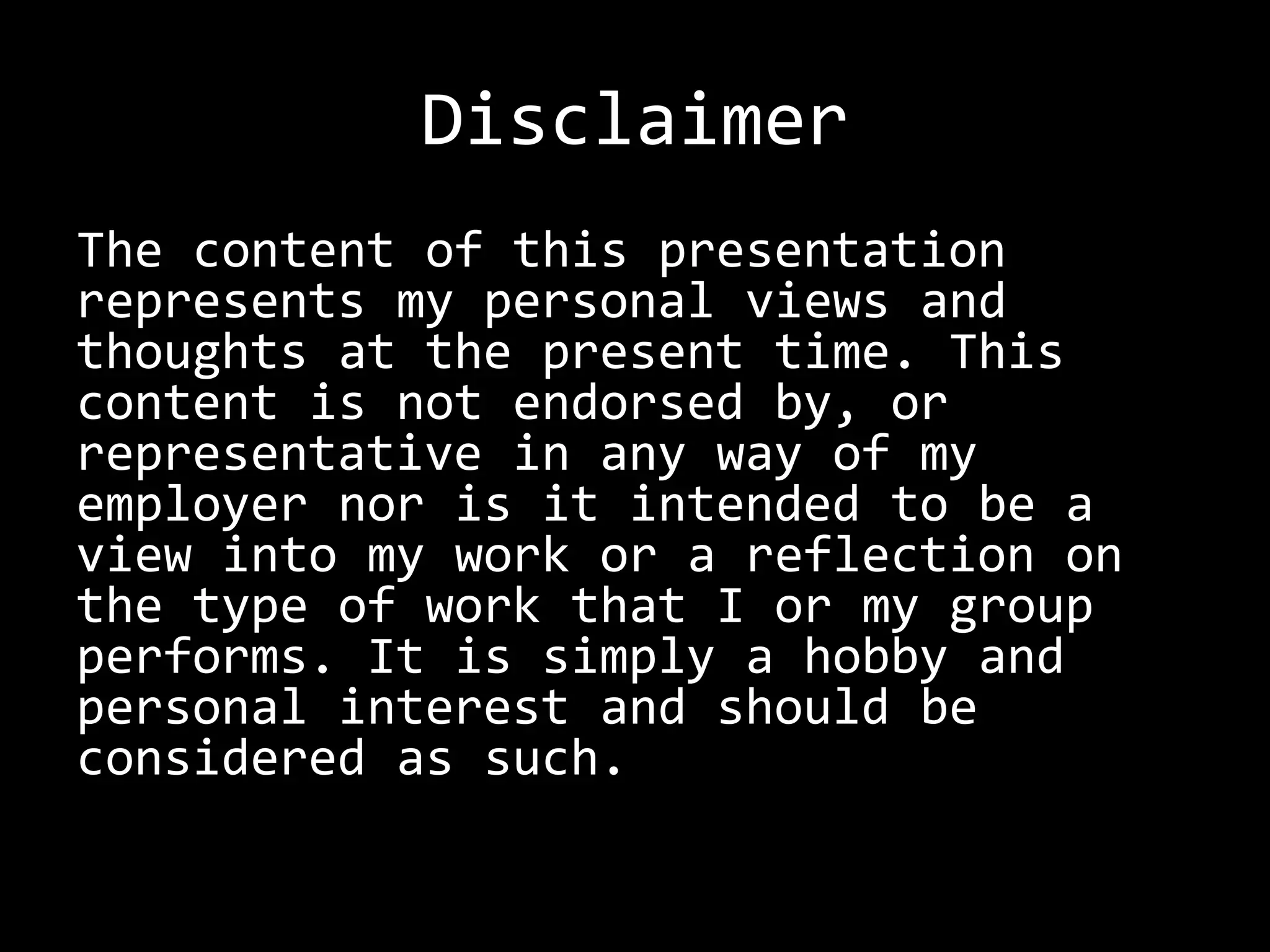
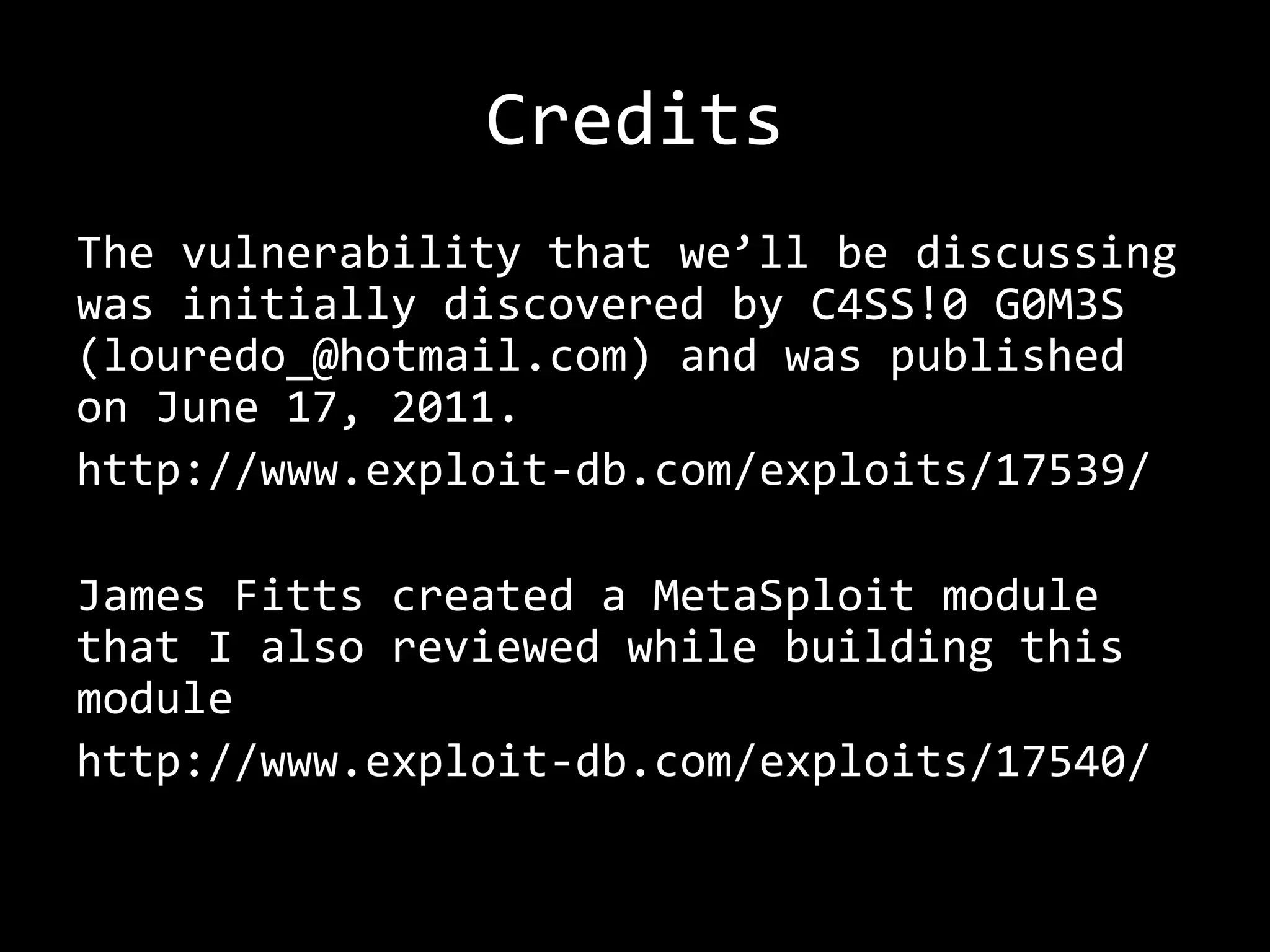
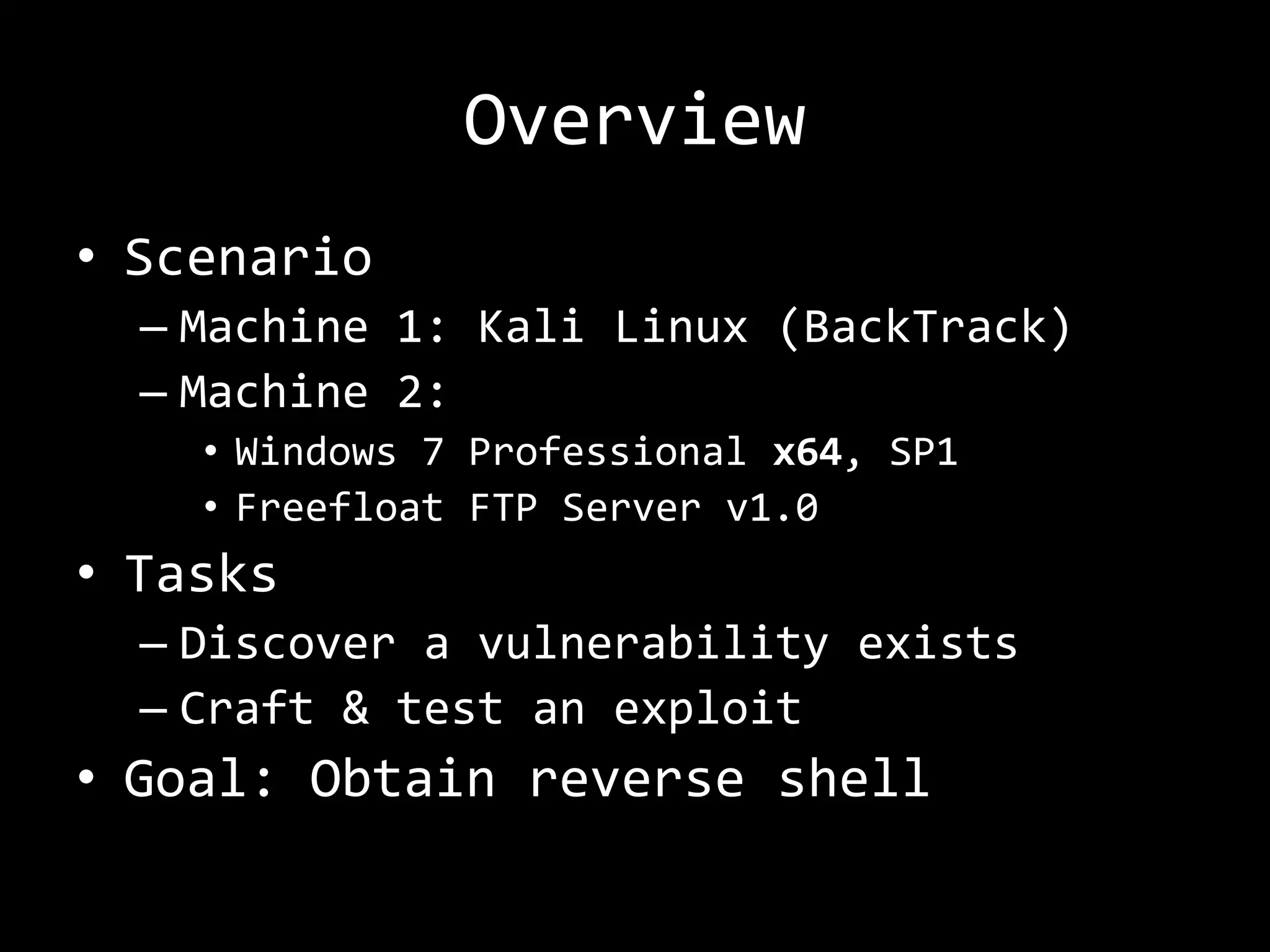

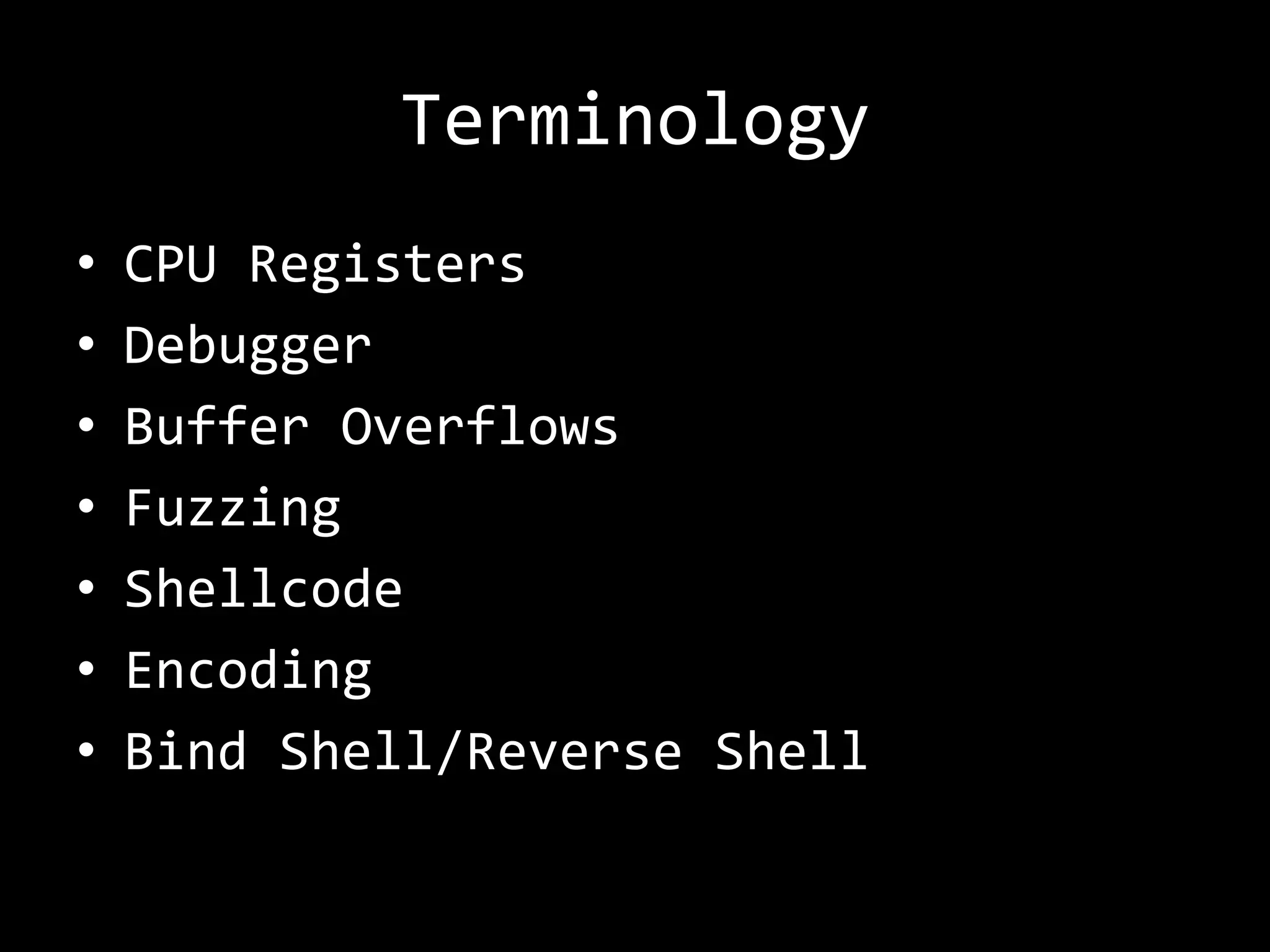
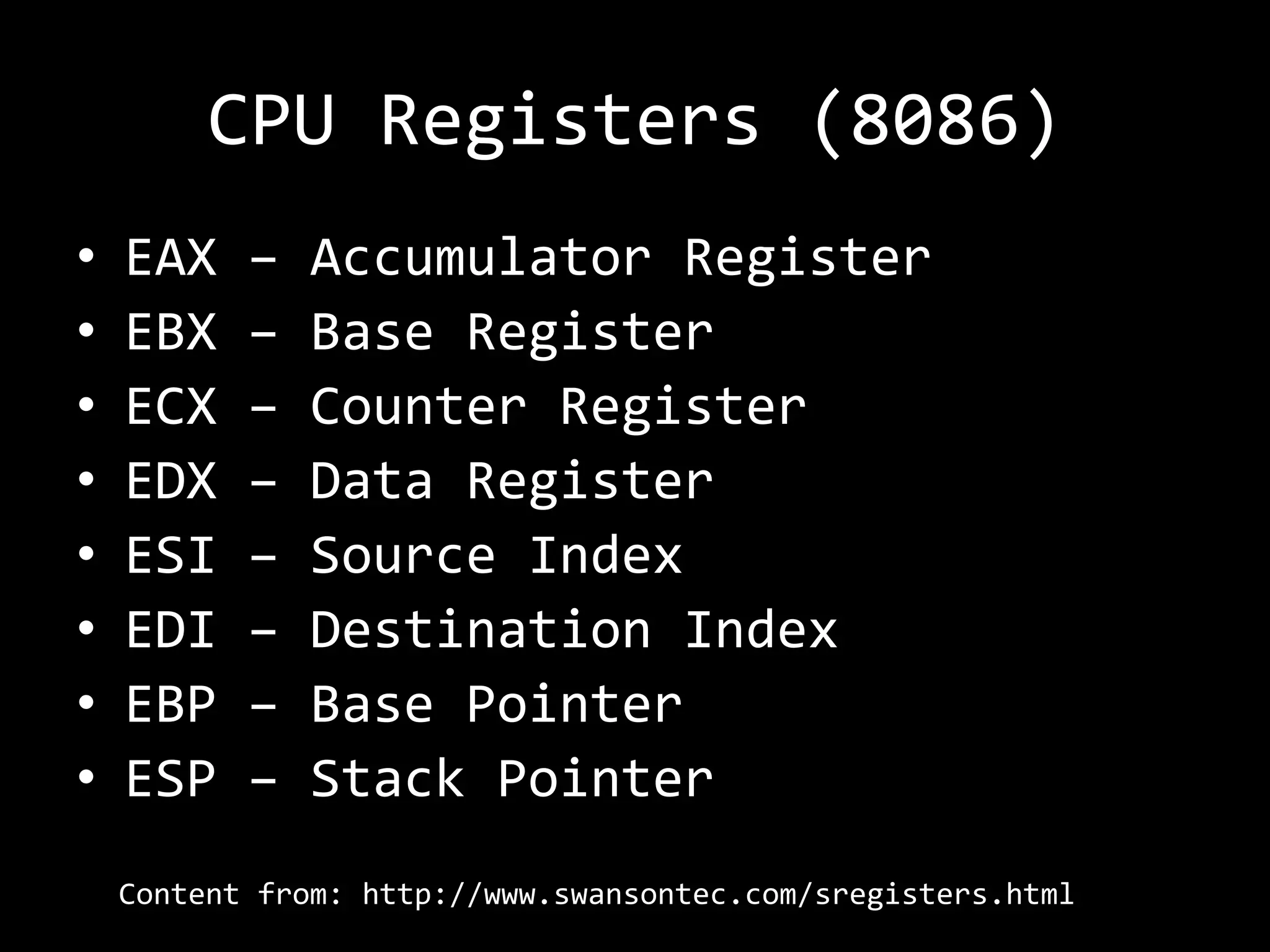
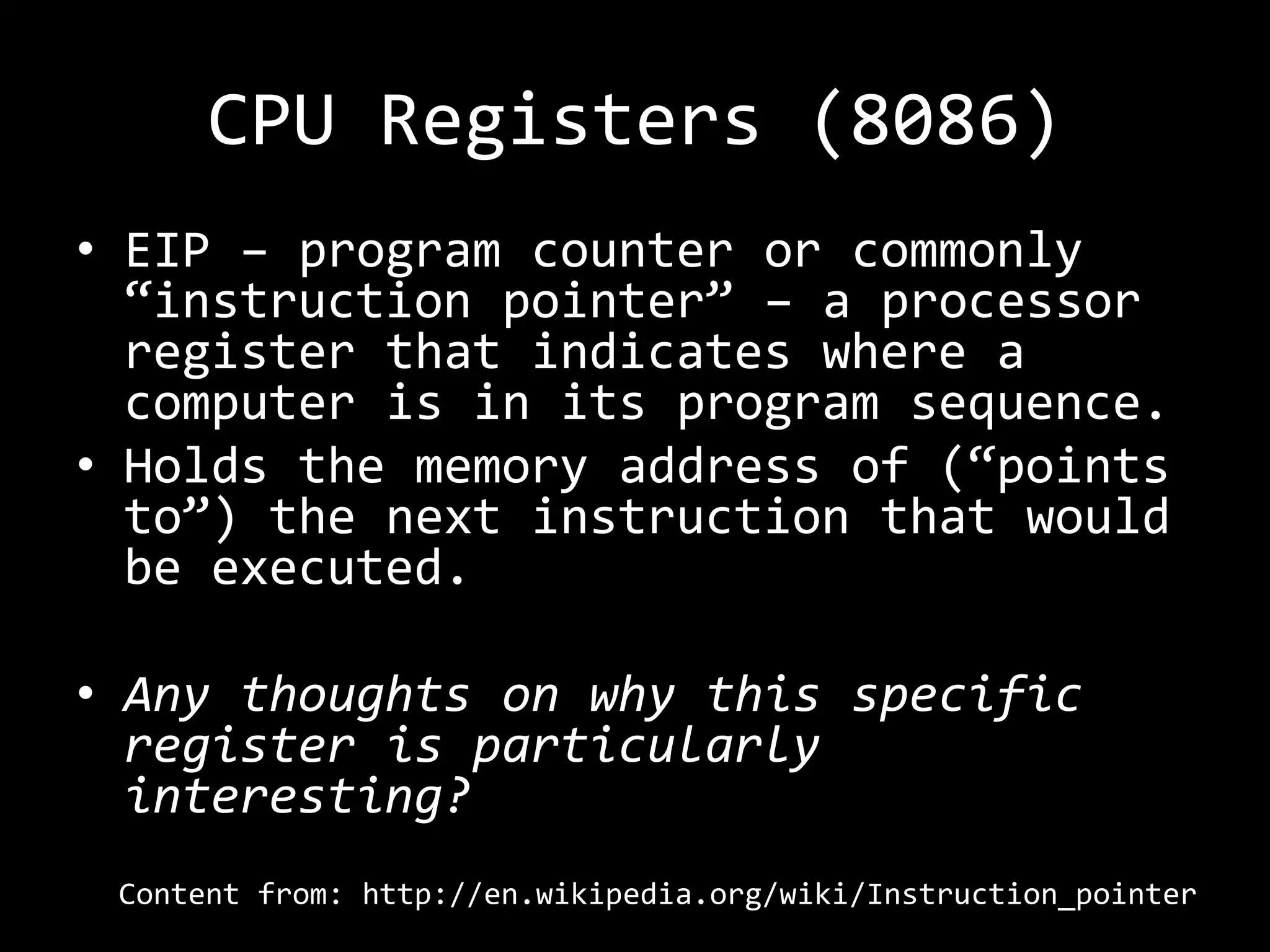
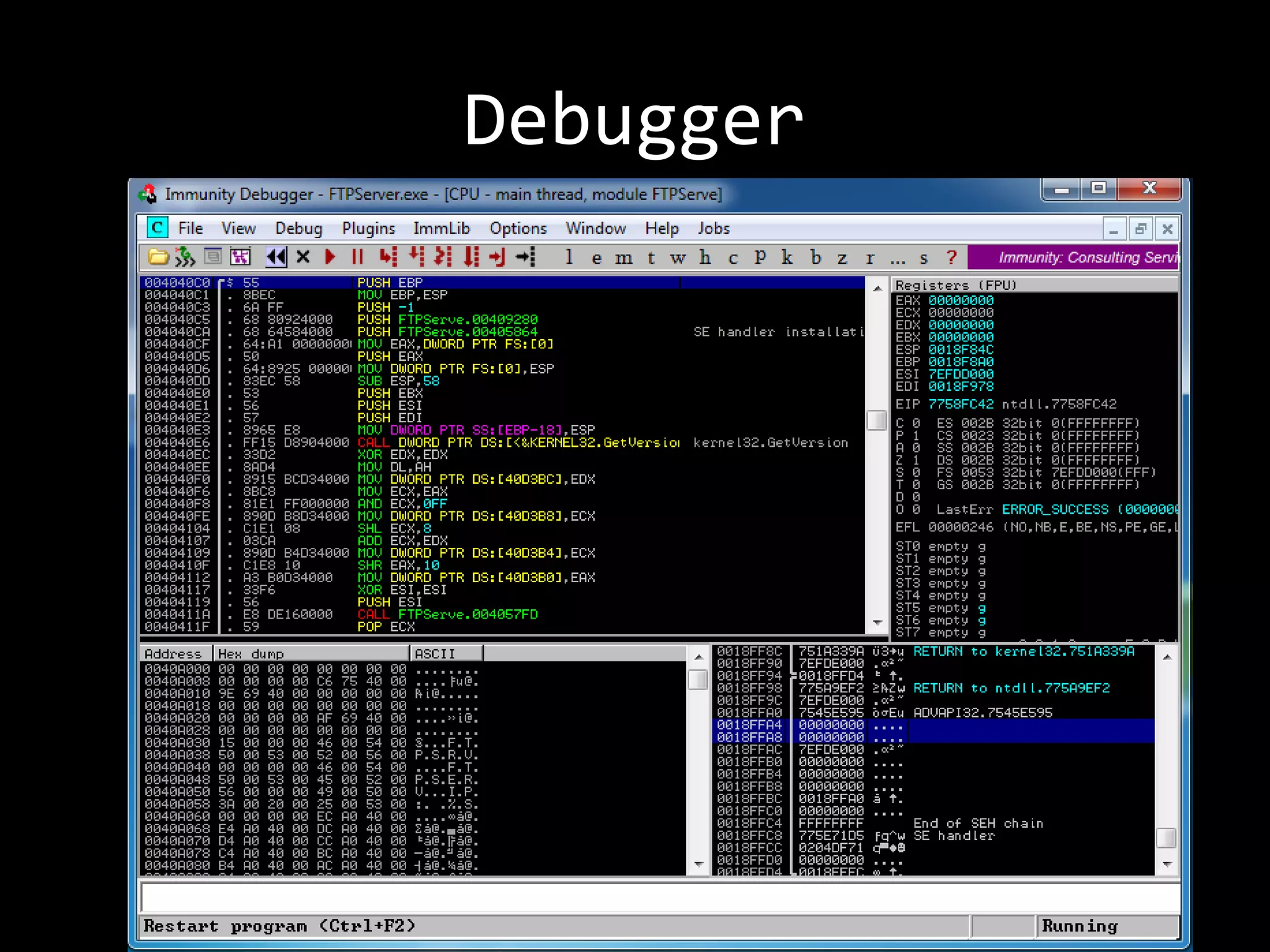
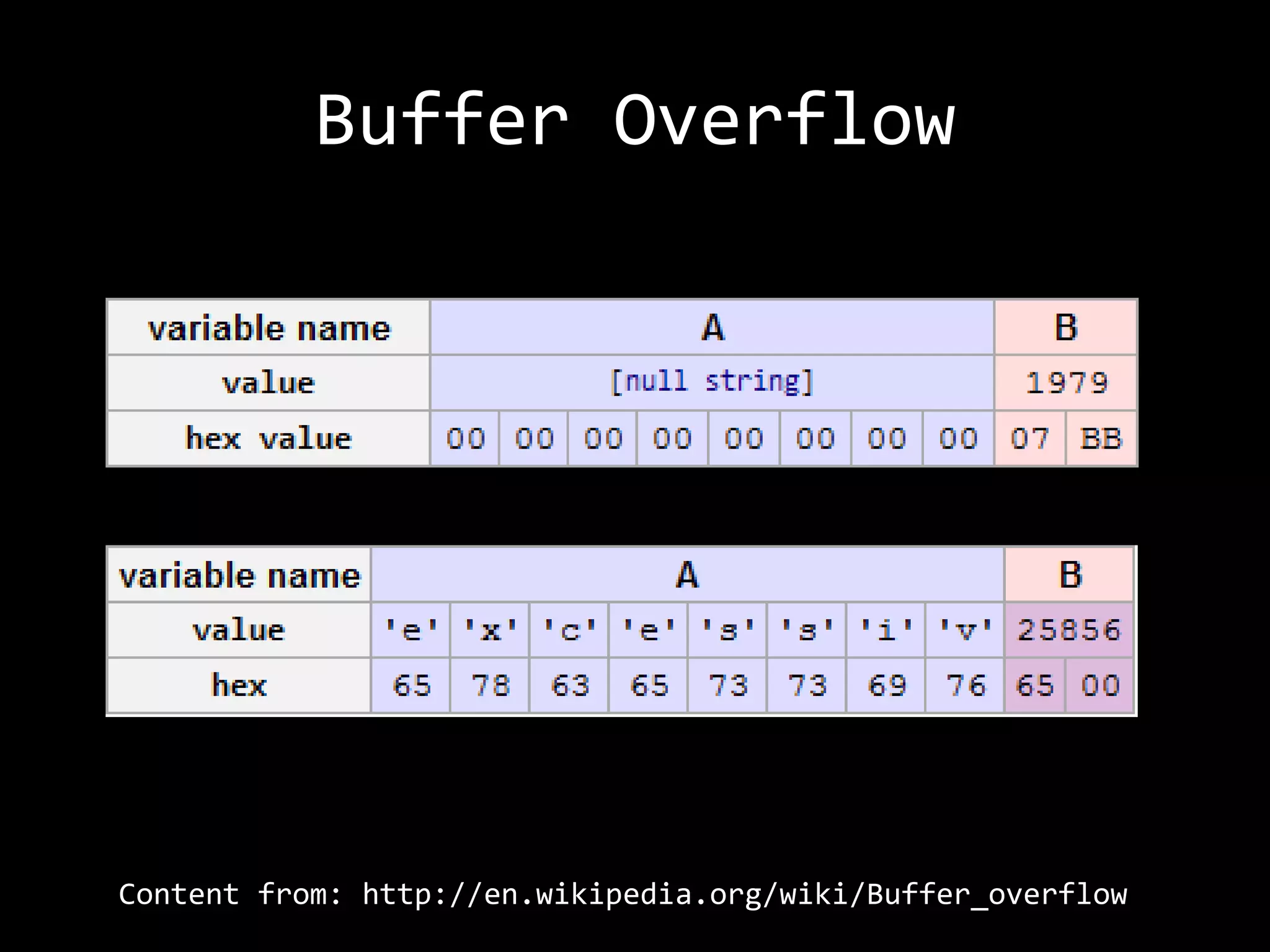

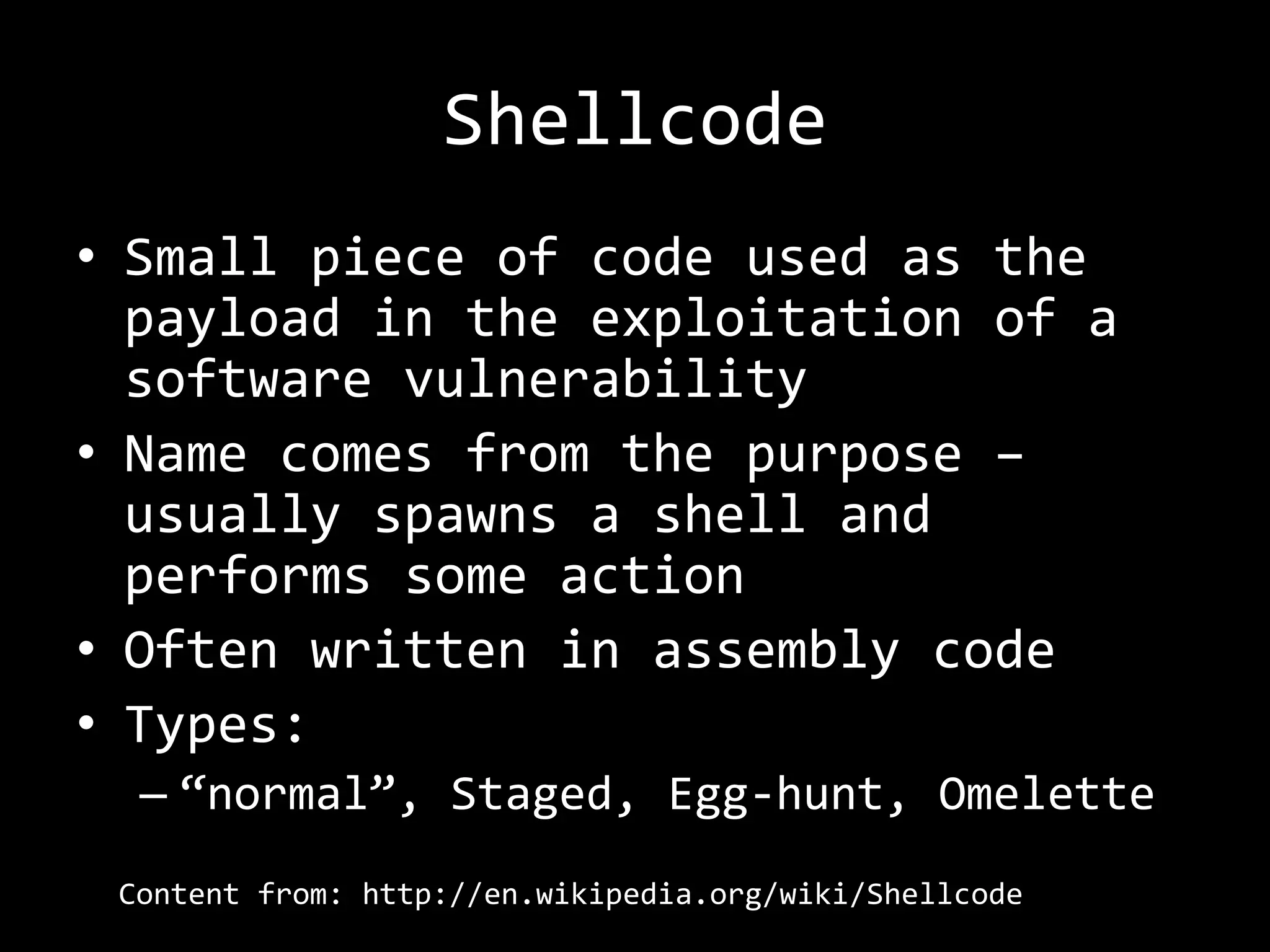
![Shellcode Example [BITS 32] mov ebx, 0x00424F52 push ebx mov esi, esp xor eax, eax push eax push esi push esi push eax mov eax, 0x7E45058A call eax](https://image.slidesharecdn.com/etcss-bufferoverflow-131023205249-phpapp01/75/ETCSS-Into-the-Mind-of-a-Hacker-14-2048.jpg)
![[BITS 32] mov ebx, 0x00424F52 ; Loads a null-terminated string “ROB” to ebx push ebx ; pushes ebx to the stack mov esi, esp ; saves null-terminated string “ROB” in esi xor eax, eax ; Zero our eax (eax=0) push eax ; Push the fourth parameter (uType) to the stack (value 0) push esi ; Push the third parameter (lpCaption) to the stack (value ROB00) push esi ; Push the second parameter (lpText) to the stack (value ROB00) push eax ; Push the first parameter (hWnd) to the stack (value 0) mov eax, 0x7E45058A ; Move the MessageBoxA address in to eax call eax ; Call the MessageBoxA function with all parameters supplied.](https://image.slidesharecdn.com/etcss-bufferoverflow-131023205249-phpapp01/75/ETCSS-Into-the-Mind-of-a-Hacker-15-2048.jpg)

